4-tert-Butylphenyl isothiocyanate
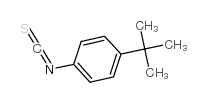
4-tert-Butylphenyl isothiocyanate structure
|
Common Name | 4-tert-Butylphenyl isothiocyanate | ||
|---|---|---|---|---|
| CAS Number | 19241-24-8 | Molecular Weight | 191.29300 | |
| Density | 0.96 g/cm3 | Boiling Point | 92 °C | |
| Molecular Formula | C11H13NS | Melting Point | 42 °C | |
| MSDS | USA | Flash Point | 122.8ºC | |
| Name | 4-tert-Butylphenyl isothiocyanate |
|---|---|
| Synonym | More Synonyms |
| Density | 0.96 g/cm3 |
|---|---|
| Boiling Point | 92 °C |
| Melting Point | 42 °C |
| Molecular Formula | C11H13NS |
| Molecular Weight | 191.29300 |
| Flash Point | 122.8ºC |
| Exact Mass | 191.07700 |
| PSA | 44.45000 |
| LogP | 3.71840 |
| Vapour Pressure | 0.0084mmHg at 25°C |
| Index of Refraction | 1.531 |
| InChIKey | OCGNNCBNRBTUCG-UHFFFAOYSA-N |
| SMILES | CC(C)(C)c1ccc(N=C=S)cc1 |
| Storage condition | Keep Cold |
Synonym: Section 2 - COMPOSITION, INFORMATION ON INGREDIENTS
Risk Phrases: 20/21/22 36/37/38 Section 3 - HAZARDS IDENTIFICATION EMERGENCY OVERVIEW
Harmful by inhalation, in contact with skin and if swallowed. Irritating to eyes, respiratory system and skin.Moisture sensitive. Potential Health Effects Eye: Causes eye irritation. Lachrymator (substance which increases the flow of tears). Skin: Causes skin irritation. Harmful if absorbed through the skin. Ingestion: Harmful if swallowed. May cause irritation of the digestive tract. Inhalation: Harmful if inhaled. Causes respiratory tract irritation. Chronic: Not available. Section 4 - FIRST AID MEASURES Eyes: Flush eyes with plenty of water for at least 15 minutes, occasionally lifting the upper and lower eyelids. Get medical aid. Skin: Get medical aid. Flush skin with plenty of water for at least 15 minutes while removing contaminated clothing and shoes. Ingestion: Get medical aid. Wash mouth out with water. Inhalation: Remove from exposure and move to fresh air immediately. If not breathing, give artificial respiration. If breathing is difficult, give oxygen. Get medical aid. Notes to Physician: Section 5 - FIRE FIGHTING MEASURES General Information: As in any fire, wear a self-contained breathing apparatus in pressure-demand, MSHA/NIOSH (approved or equivalent), and full protective gear. Extinguishing Media: Use foam, dry chemical, or carbon dioxide. Section 6 - ACCIDENTAL RELEASE MEASURES General Information: Use proper personal protective equipment as indicated in Section 8. Spills/Leaks: Vacuum or sweep up material and place into a suitable disposal container. Section 7 - HANDLING and STORAGE Handling: Avoid breathing dust, vapor, mist, or gas. Avoid contact with skin and eyes. Use only in a chemical fume hood. Storage: Store in a cool, dry place. Store in a tightly closed container. Store under an inert atmosphere. Section 8 - EXPOSURE CONTROLS, PERSONAL PROTECTION Engineering Controls: Facilities storing or utilizing this material should be equipped with an eyewash facility and a safety shower. Use adequate ventilation to keep airborne concentrations low. Exposure Limits CAS# 19241-24-8: Personal Protective Equipment Eyes: Not available. Skin: Wear appropriate protective gloves to prevent skin exposure. Clothing: Wear appropriate protective clothing to prevent skin exposure. Respirators: Follow the OSHA respirator regulations found in 29 CFR 1910.134 or European Standard EN 149. Use a NIOSH/MSHA or European Standard EN 149 approved respirator if exposure limits are exceeded or if irritation or other symptoms are experienced. Section 9 - PHYSICAL AND CHEMICAL PROPERTIES Physical State: Solid Color: colorless Odor: pungent odor pH: Not available. Vapor Pressure: Not available. Viscosity: Not available. Boiling Point: 92 - 94 deg C @0.5mmHg Freezing/Melting Point: Not available. Autoignition Temperature: Not available. Flash Point: Not available. Explosion Limits, lower: Not available. Explosion Limits, upper: Not available. Decomposition Temperature: Solubility in water: Specific Gravity/Density: Molecular Formula: C11H13NS Molecular Weight: 191.3 Section 10 - STABILITY AND REACTIVITY Chemical Stability: Not available. Conditions to Avoid: Incompatible materials, exposure to moist air or water. Incompatibilities with Other Materials: Bases, oxidizing agents, reducing agents, amines, acids. Hazardous Decomposition Products: Carbon monoxide, oxides of nitrogen, oxides of sulfur, carbon dioxide. Hazardous Polymerization: Has not been reported Section 11 - TOXICOLOGICAL INFORMATION RTECS#: CAS# 19241-24-8 unlisted. LD50/LC50: Not available. Carcinogenicity: 4-(tert-Butyl)phenyl isothiocyanate - Not listed by ACGIH, IARC, or NTP. Section 12 - ECOLOGICAL INFORMATION Section 13 - DISPOSAL CONSIDERATIONS Dispose of in a manner consistent with federal, state, and local regulations. Section 14 - TRANSPORT INFORMATION IATA Shipping Name: TOXIC SOLID, ORGANIC, N.O.S.* Hazard Class: 6.1 UN Number: 2811 Packing Group: III IMO Shipping Name: TOXIC SOLID, ORGANIC, N.O.S. Hazard Class: 6.1 UN Number: 2811 Packing Group: III RID/ADR Shipping Name: TOXIC SOLID, ORGANIC, N.O.S. Hazard Class: 6.1 UN Number: 2811 Packing group: III Section 15 - REGULATORY INFORMATION European/International Regulations European Labeling in Accordance with EC Directives Hazard Symbols: XN Risk Phrases: R 20/21/22 Harmful by inhalation, in contact with skin and if swallowed. R 36/37/38 Irritating to eyes, respiratory system and skin. Safety Phrases: S 26 In case of contact with eyes, rinse immediately with plenty of water and seek medical advice. S 36/37/39 Wear suitable protective clothing, gloves and eye/face protection. WGK (Water Danger/Protection) CAS# 19241-24-8: No information available. Canada None of the chemicals in this product are listed on the DSL/NDSL list. CAS# 19241-24-8 is not listed on Canada's Ingredient Disclosure List. US FEDERAL TSCA CAS# 19241-24-8 is not listed on the TSCA inventory. It is for research and development use only. SECTION 16 - ADDITIONAL INFORMATION N/A |
| Hazard Codes | T: Toxic; |
|---|---|
| Risk Phrases | R20/21/22 |
| Safety Phrases | S26-S36/37/39 |
| RIDADR | 2811 |
| Hazard Class | 6.1 |
| HS Code | 2930909090 |
|
~60% 
4-tert-Butylphe... CAS#:19241-24-8 |
| Literature: Digital Biotech Co., Ltd. Patent: WO2004/35533 A1, 2004 ; Location in patent: Page 38 ; WO 2004/035533 A1 |
|
~% 
4-tert-Butylphe... CAS#:19241-24-8 |
| Literature: Bioorganic and Medicinal Chemistry Letters, , vol. 22, # 17 p. 5392 - 5395 |
|
~% 
4-tert-Butylphe... CAS#:19241-24-8 |
| Literature: Chemische Berichte, , vol. 17, p. 1233 |
|
~% 
4-tert-Butylphe... CAS#:19241-24-8 |
| Literature: Chemische Berichte, , vol. 17, p. 1233 |
|
~% 
4-tert-Butylphe... CAS#:19241-24-8 |
| Literature: Chemische Berichte, , vol. 16, p. 2017 |
|
~% 
4-tert-Butylphe... CAS#:19241-24-8 |
| Literature: Chemische Berichte, , vol. 17, p. 1233 |
|
~% 
4-tert-Butylphe... CAS#:19241-24-8
Detail
|
| Literature: Chemische Berichte, , vol. 16, p. 2017 |
| HS Code | 2930909090 |
|---|---|
| Summary | 2930909090. other organo-sulphur compounds. VAT:17.0%. Tax rebate rate:13.0%. . MFN tariff:6.5%. General tariff:30.0% |
| 1-tert-butyl-4-isothiocyanatobenzene |
| 4-(tert-Butyl)phenyl isothiocyanate |
| MFCD00022059 |
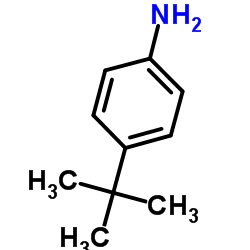
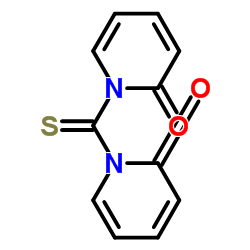
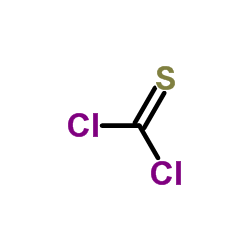
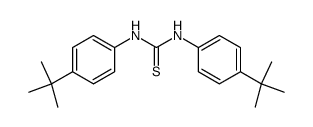

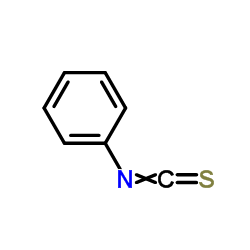

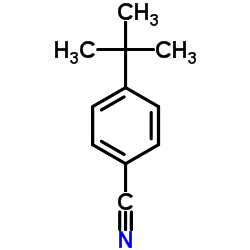 CAS#:4210-32-6
CAS#:4210-32-6![1-(4-tert-butylphenyl)-3-[[(E)-1-pyridin-2-ylethylideneamino]carbamothioylamino]thiourea structure](https://image.chemsrc.com/caspic/097/140835-39-8.png) CAS#:140835-39-8
CAS#:140835-39-8
